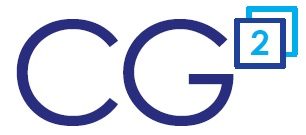From a financial perspective, why are indirect trade promotions more complex than direct customers?
First, let’s define the key words in the question:
Retail CPG Definitions:
An indirect customer sells your product, but does not buy directly from you. Indirect customers buy product from a distributor or re-distributor.
A direct customer is one that sells your product and buys it directly from you.
Let’s start with the obvious. The more data you have, the easier it is to manage. With a direct customer, your ERP has the data of what you sold to your customer. While the shipment data may not align with the promotion, you still have a financial connection in your ERP between your revenue and the promotional deduction and/or payments for the promotion.
Example 1, a direct customer: You have a scan event in one of the Kroger KMAs. They deduct $2,000 for an April event against unrelated open invoices in May. From a financial data perspective, your revenue and the promotional expense are connected within your ERP because they are the same customer or customer hierarchy.
Now let’s consider an indirect customer. Because you don’t ship product to indirect customers, you start with a situation with less data than direct customers. Your organization may have access to additional data sources like SPINS, IRI, AC Nielsne, POS, and/or distributor pull data. However, there are some challenges and costs using third-party data sources, but that's a topic for another blog.
If that was bad enough, here’s another twist. Indirect customers not only purchase through distributors, but these distributors can deduct on behalf of the indirect customer. This is possible because the distributor is a direct customer. You invoice the distributor, so that gives the distributor the ability to deduct trade funds owed to them and to your indirect customers that purchase your products through them, the distributor!
Example 2, an indirect customer: You have a scan event with Whole Foods in April. The event costs you $2,000. UNFI deducts $2,000 on unrelated open invoices in May on behalf of Whole Foods. From a financial data perspective, your ERP may have a disconnect. The revenue is on your P&L for customer UNFI, but you want to manage the scan event for the indirect customer Whole Foods. You don’t sell to Whole Foods, so it may not even be in your ERP.
If you thought that was challenging, there’s one more complexity. Indirect customers don’t purchase your products from one distributor. Each indirect store or retailer DC could purchase your products from different distributors!
Example 3, indirect customer pulling from multiple distributors: You have a scan event with Whole Foods in April. The event costs you $2,000. However, some of the Whole Foods stores were serviced by UNFI East, some by UNFI West, and some by KeHE. You get deductions from multiple distributors and locations that add up to $2,000. From a financial data perspective, you have an even bigger data disconnect in your ERP. The revenue on your P&L shows up under multiple direct customers, including UNFI East, West, KeHE, etc. You now have multiple deductions that your ERP hasn’t associated to your indirect customer Whole Foods, and probably didn’t link to an April scan event.
These examples demonstrate some of the complexity of promotions for indirect customers like Stop & Shop in the northeast, Whole Foods, Sprouts and many other retailers for CPG companies in the Natural Food category.
Trade Promotion Management solutions (TPM) are designed to help manage the complexity of indirect promotions. A TPM solution will enable you to create a promotion for an indirect customer, and link deductions from multiple distributors to the promotion. If some of the trade promotion’s cost is paid directly by check or ACH to the indirect customer, the TPM solution should also link that to the promotion. In addition to this basic functionality, many TPM solutions can integrate third-party data to support sell-through analysis.
If you are managing your promotions in Excel spreadsheets, we encourage you to evaluate TPM vendors.
Alex Ring
Co-founder
CG Squared
